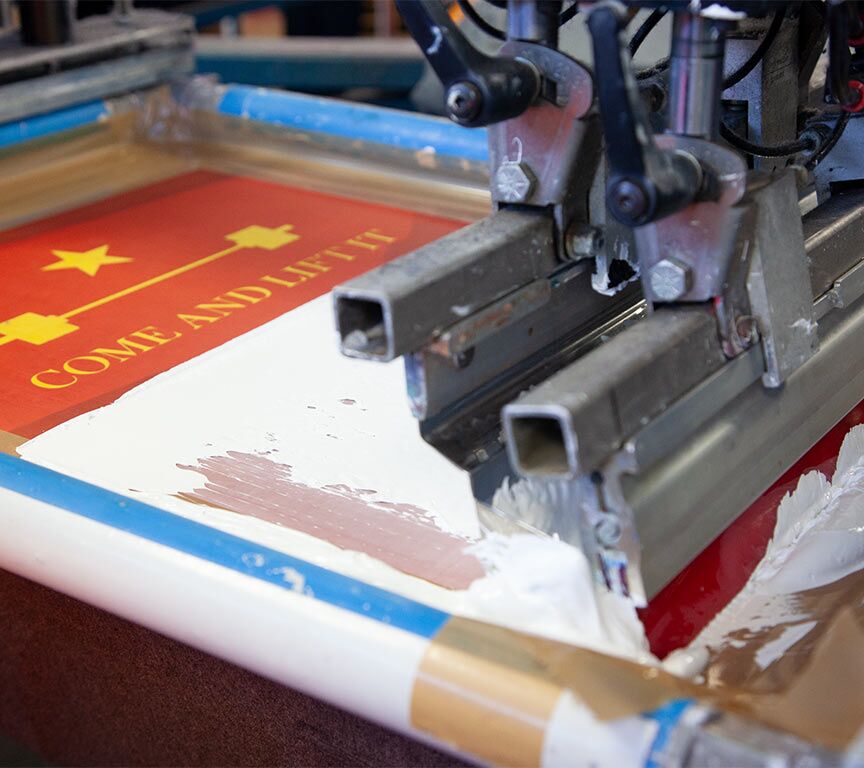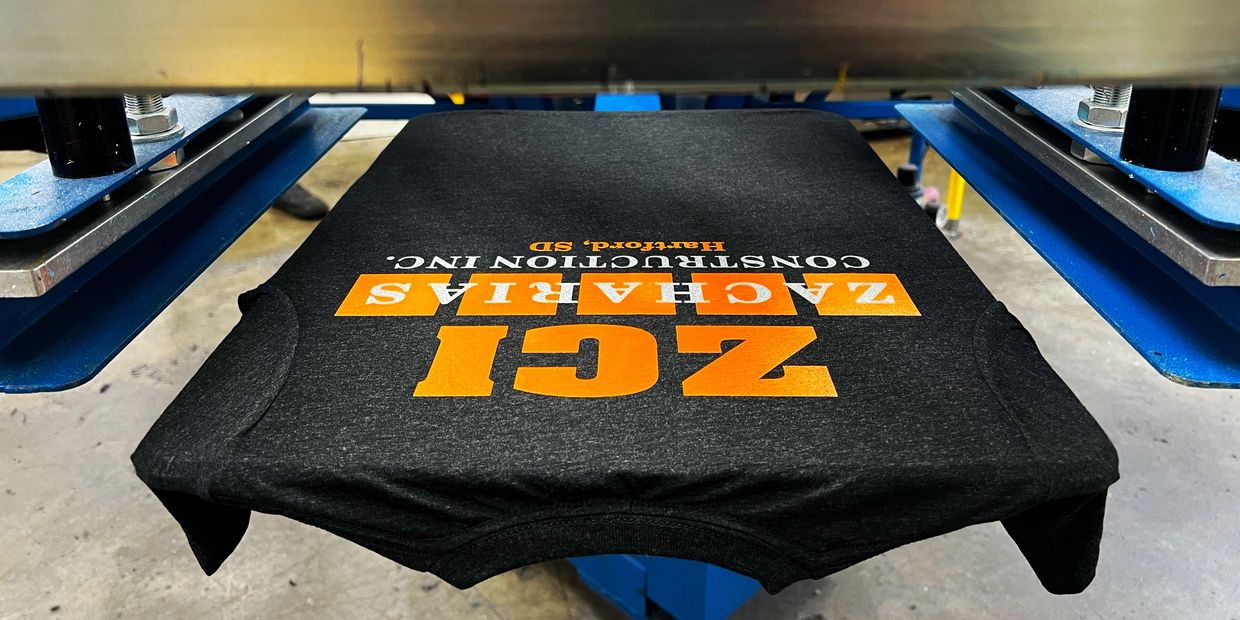Complete Screen Printing Kit for Artists and Creators
Complete Screen Printing Kit for Artists and Creators
Blog Article
Screen Printing Uncovered: Whatever You Need to Understand About Tee Shirt and Garment Printing Techniques
Display printing is a fascinating method that combines art with technique, using countless opportunities for creative thinking. Ready to discover the essential elements that make screen publishing an art kind?
The Essentials of Display Printing: Just How It Works
When you plunge into screen printing, you'll uncover it's both a scientific research and an art. At its core, display printing involves creating a stencil, or display, that permits ink to go through just in specific areas (screen printing kit). You begin by picking your layout and preparing your display with a light-sensitive emulsion. As soon as you subject this solution to light, it hardens, leaving your style as a negative space.
Position the screen over the material, then utilize a squeegee to push ink with the display onto the garment. Each step is crucial, and mastering them will certainly elevate your display printing skills, transforming simple garments right into distinct, meaningful pieces.
Kinds Of Display Printing Methods
Once you understand the basics of display printing, it's time to explore the numerous methods that can elevate your layouts. One popular technique is conventional screen printing, where ink is pressed via a stenciled screen. This strategy is wonderful for vibrant, vivid colors. After that there's water-based ink printing, which supplies a softer feeling and is green, but it requires a different technique to treating.
If you're going for fine details, take into consideration discharge printing. This method gets rid of dye from the textile, leaving a soft, vintage appearance. An additional choice is plastisol printing, understood for its resilience and brilliant shades, making it a preferred for lots of brand names. Finally, experiment with halftone printing to produce gradient effects and intricate styles. Each technique has its one-of-a-kind charm, so don't think twice to try them bent on locate what matches your design best!
Crucial Tools for Display Printing
To achieve stunning outcomes in display printing, having the best tools is basic. You'll require a durable screen printing structure, which holds the mesh that transfers your style onto the garment. Next off, invest in top quality squeegees; these are important for using ink equally throughout the screen.
Picking the Right Inks and Products
When choosing inks and materials for display printing, you need to consider the kind of ink that works ideal for your job. Think of textile compatibility to ensure your styles look last and wonderful long. Explore green ink alternatives to make your printing process much more lasting.
Kinds of Display Inks
Choosing the ideal screen ink is important for achieving lively, durable prints that satisfy your project's demands. There are numerous types of display inks to check out. Specialized inks, such as glow-in-the-dark or metallic, can include special impacts to your styles.

Fabric Compatibility Considerations
Comprehending material compatibility is vital for achieving top quality display prints, especially because various products respond distinctly to various inks. When selecting inks, think about the material type-- cotton, polyester, or blends. For cotton, water-based inks function well, providing gentleness and breathability. Polyester, on the various other hand, typically calls for plastisol inks for much better adhesion and vibrant shades. If you're publishing on blends, you may need to utilize a mix of both types. Always check your inks on example material to ensure they stick properly and maintain shade integrity. In addition, bear in mind that fabric weight and structure can influence the final result, so choosing the appropriate ink and product combo is crucial for your job's success.
Eco-Friendly Ink Options
Eco-friendly inks are becoming a popular choice for screen printers that want to reduce their environmental influence while maintaining top quality. When selecting inks, take into consideration water-based inks, which are much less dangerous and less complicated to clean up compared to traditional solvents.
In addition, try to find inks made from sustainable sources, such as soy or vegetable-based choices. By picking the appropriate inks and products, you'll not just develop sensational styles however also add to a much more sustainable printing procedure. Make the button, and your prints will reflect your dedication to the atmosphere!
Preparing Your Design for Screen Printing

File Layout Needs
To assure your design looks sharp and vivid on textile, you'll need to pay very close attention to submit style needs for screen printing. Beginning with vector documents like AI or EPS, as they can be scaled without shedding top quality. If you utilize raster images, choose high-resolution data, such as TIFF or PNG, preferably at 300 DPI. Stay clear of using JPEGs, as they can shed clarity when resized. Additionally, see to it your design has a clear history to stop unwanted white edges on your prints. Maintain shade modes in mind; CMYK is typical for screen printing, so convert your RGB creates as necessary - screen printing kit. By following these standards, you'll establish your art work up for an effective print.
Color Separation Techniques
Color separation is an important action in preparing your design for display printing, and grasping it can substantially boost your print quality. You'll need to damage your layout into private shades, as each color requires a different screen throughout printing. Start by recognizing all the shades in your style and create layers each. You can make use of software like Adobe Photoshop or Illustrator to isolate and different shades efficiently. Be particular to conserve each layer as a separate documents, generally in a format like TIFF or PSD. This accuracy not only guarantees exact color depiction yet likewise simplifies the printing process. By taking note of color splitting up, you'll accomplish professional and vibrant results in your screen-printed garments.
Resolution and Dimension
Attaining the very best cause display printing begins with assuring your layout has the appropriate resolution and size. Preferably, your art work should go to least 300 DPI (dots per inch) for sharp, clear prints. Your final item may look unprofessional and pixelated. if you utilize lower resolution.
When it pertains to size, think about the dimensions of your print area. Design your artwork to match the final print dimension, ideally producing it in the actual dimensions you'll be printing. In this manner, you'll prevent any type of unexpected scaling concerns.
Constantly examine your design in both vector and raster layouts. Vector graphics can be scaled without losing high quality, making them optimal for display printing. Preparing correctly will assure your design looks outstanding on every garment!
Step-by-Step Display Printing Process
Screen printing is a vibrant process that permits you to produce lively styles on numerous surfaces. To get begun, you'll require a screen, emulsion, and your selected ink.
After cleaning out the unexposed emulsion, your screen prepares. Establish it up on your printing surface and align your garment below it. Pour ink onto the display and use a squeegee to push the ink through the pattern onto the textile. Raise the display thoroughly and allow the print completely dry. Lastly, cure the ink making use of warmth to assure longevity. That's it! You have actually efficiently screen printed your layout.
Tips for Effective Display Printing Projects
While you're diving right into your display printing tasks, bear in mind that preparation is essential to success. Beginning by collecting all your products-- inks, garments, screens, and squeegees. A tidy workspace aids stop unwanted mistakes, so clean up prior to you start.
Next, validate t-shirt printing your art work is high-resolution and appropriately sized for your garment. Evaluate your display for proper direct exposure and clean it extensively to prevent smudges. When blending your inks, comply with the maker's guidelines to achieve the right consistency.
During printing, apply even pressure with your squeegee for regular outcomes. Do not rush; take your time to validate each print fulfills your standards. After printing, allow your garments completely dry totally before dealing with or packaging them.
Last but not least, constantly maintain an example of your benefit future recommendation. This method, you can assess your progression and boost your strategies in time. Pleased printing!

Often Asked Concerns
Exactly how Lengthy Does It Take to Establish a Display Printing Work?
Establishing up a screen printing work commonly takes around half an hour to an hour. You'll prepare the displays, mix inks, and readjust the press. The moment differs based on complexity and experience, so stay arranged!
Can I Print on Different Fabric Types Utilizing the Very Same Strategy?
Yes, you can publish on different fabric types making use of the same method, but you'll require to readjust your setups and inks. Some textiles absorb ink in different ways, so trying out assurances the most effective results for each material.
What Are Usual Mistakes to Avoid in Screen Printing?
When display printing, prevent usual mistakes like using the wrong ink, overlooking proper direct exposure times, or skipping pre-press checks. Constantly evaluate your setup and preserve tidy displays to ensure quality outcomes each time.
How Can I Properly Tidy and Preserve My Display Printing Tools?
To properly clean and preserve your display printing equipment, you need to consistently clean screens with appropriate solvents, inspect mops for wear, and guarantee all devices are kept dust-free and completely dry. Uniformity protects against costly fixings and boosts efficiency.
Is Screen Printing Eco Pleasant Contrasted to Various Other Techniques?
Screen printing can be more ecologically friendly than other approaches, specifically if you utilize water-based inks and eco-conscious products. By selecting lasting products and practices, you decrease waste and reduce your effect on the planet.
Screen Printing Uncovered: Every Little Thing You Need to Know Concerning T-Shirt and Garment Printing Strategies
At its core, screen printing entails producing a pattern, or display, that permits ink to pass via only in details areas. Placement the screen over the material, after that use a squeegee to press ink through the display onto the garment. One preferred technique is traditional display printing, where ink is pushed via a stenciled screen.When choosing inks and materials for display printing, you need to take into account the type of ink that works finest for your task.
Report this page